
RIVISTA DEL NUOVO CIMENTO
Scope & Guideline
Advancing the Frontiers of Physics and Astronomy.
Introduction
Aims and Scopes
- Particle and Astroparticle Physics:
The journal has a strong focus on particle physics, including studies on neutrinos, gamma-ray spectroscopy, and the applications of silicon photomultipliers (SiPMs) in low light detection. This area reflects the journal's commitment to advancing knowledge in fundamental particles and their interactions. - Nuclear Physics and Related Techniques:
Research related to nuclear matter, heavy-ion collisions, and techniques for particle and nuclei identification is prominent. This reflects the journal's dedication to exploring the intricacies of nuclear interactions and the development of experimental methods. - Interdisciplinary Applications of Physics:
Recent publications highlight the application of physics concepts in biophysics, geoscience, and materials science, such as photodynamic treatment for pathogens and vibrational imaging for cancer diagnosis. This interdisciplinary approach showcases the relevance of physics in solving real-world problems. - Theoretical Physics and Mathematical Approaches:
The journal publishes significant theoretical contributions, including studies on supersymmetry, kinetic field theory, and nonlinear optics. This indicates a consistent focus on advancing theoretical frameworks that underpin various physical phenomena. - Environmental and Earth Sciences:
Themes related to geophysics, plate tectonics, and oceanic lithosphere generation illustrate the journal's engagement with Earth sciences, emphasizing the physical principles governing our planet's processes.
Trending and Emerging
- Quantum Technologies and Photonics:
There is an increasing emphasis on quantum technologies, particularly in integrated photonics and nonlinear optics. This trend reflects the growing importance of quantum mechanics in advancing technological applications and innovation. - Astrophysics and Cosmic Phenomena:
Recent papers on gamma-ray halos, neutrinos, and cosmic structure formation indicate a heightened interest in astrophysical phenomena, showcasing the journal's dedication to exploring the universe's mysteries. - Biophysics and Biomedical Applications:
The emergence of studies related to biophysics, such as applications in cancer diagnosis and pathogen treatment, underscores a significant trend towards integrating physics with biological sciences for practical health-related solutions. - Advanced Materials and Nanotechnology:
Research focusing on advanced materials, including nonlinear plasmonics and photonic applications, is gaining traction, reflecting a broader interest in nanotechnology and its applications in various fields. - Complex Systems and Intermittent Phenomena:
The exploration of complex systems, such as granular flows and their statistical properties, highlights a growing interest in understanding non-linear and emergent behaviors in physical systems.
Declining or Waning
- Classical Physics Applications:
There seems to be a waning interest in classical physics topics, such as traditional mechanics and thermodynamics, as the focus shifts towards more contemporary and interdisciplinary applications of physics. - Historical Reviews and Retrospectives:
Although the journal has published some retrospective reviews, there is a noticeable decrease in papers that focus solely on historical perspectives or reviews of past developments, indicating a shift towards more forward-looking research. - Narrowly Defined Subfields:
Certain specialized subfields that once received more attention, such as specific aspects of solid-state physics or low-energy nuclear physics, appear to be less frequently represented, suggesting a trend towards broader and more integrative themes.
Similar Journals
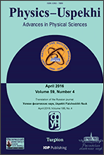
PHYSICS-USPEKHI
Navigating the Cosmos of Physics and AstronomyPHYSICS-USPEKHI, published by Uspekhi Fizicheskikh Nauk, is a prominent peer-reviewed journal in the field of physics and astronomy, reaching researchers and professionals since its inception in 1993. With an ISSN of 1063-7869 and an E-ISSN of 1468-4780, this esteemed journal has been classified as Q2 in the Physics and Astronomy category based on the 2023 quartiles, ranking 74 out of 243 journals in its Scopus classification, placing it in the 69th percentile. Although currently not an open access journal, it provides invaluable insights and advancements in the field, fostering an environment for scholarly exchange and collaborative research. Based in Moscow, Russia, PHYSICS-USPEKHI continues to shape the landscape of theoretical and experimental physics, inviting submissions that contribute to its rich legacy of high-impact scientific discourse.
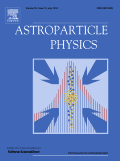
ASTROPARTICLE PHYSICS
Pioneering Research in the Realm of Astroparticle PhenomenaASTROPARTICLE PHYSICS is a premier international journal dedicated to advancing the understanding of the intersection between particle physics, astronomy, and astrophysics. Published by Elsevier, this journal has established itself as a leading source of research insights since its inception in 1992, with a remarkable impact factor positioning it within the Q1 category for Astronomy and Astrophysics for 2023. With a Scopus ranking of 18 out of 90 in its field, representing the top 80th percentile, ASTROPARTICLE PHYSICS serves as an essential platform for disseminating groundbreaking research that influences astrophysical studies and cosmological theories. Researchers and academics have access to a robust collection of peer-reviewed articles that explore various dimensions of astroparticle phenomena, collaborative cosmic investigations, and theoretical advancements. Although not an open-access journal, it provides extensive research coverage accessible to a global audience from its headquarters in Amsterdam, Netherlands, offering a vital resource for those seeking to push the boundaries of knowledge in the realms of astrophysics and particle physics.
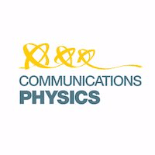
Communications Physics
Bridging gaps with groundbreaking findings.Communications Physics is a premier open access journal published by Nature Portfolio, dedicated to disseminating high-quality research in the field of Physics and Astronomy. Since its inception in 2018, the journal has rapidly established itself as a vital platform for innovative scientific communication, boasting an impressive Impact Factor and achieving Q1 status in the 2023 category of Physics and Astronomy (miscellaneous). With a Scopus rank of #31 out of 243, placing it within the 87th percentile, Communications Physics attracts a global audience of researchers, professionals, and students eager to engage with cutting-edge findings. The journal supports open access, ensuring that research is freely available to the public, which enhances its visibility and encourages broader discussions within the scientific community. Located in Berlin, Germany, Communications Physics aims to bridge the gap between various disciplines within physics, fostering interdisciplinary collaboration and inspiring future research endeavors.
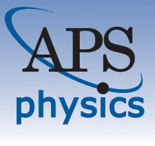
PHYSICAL REVIEW D
Illuminating the Cosmos: Where Theory Meets ExperimentPHYSICAL REVIEW D, published by the American Physical Society, is a premier journal dedicated to the rapid dissemination of significant research findings in the fields of Nuclear and High Energy Physics as well as Physics and Astronomy. With an impressive Impact Factor and a prestigious Q1 ranking in 2023, it stands as one of the leading journals in its domain, with a Scopus ranking of #6 out of 87 in its category, placing it in the 93rd percentile. The journal welcomes rigorous theoretical and experimental studies that advance understandings in particle physics, cosmology, and quantum field theory. Although it does not provide open access, researchers gain a significant platform to reach a global audience and contribute to the ongoing discourse within the scientific community. Published regularly since its convergence starting in 1989, it remains essential for both emerging and established scholars looking to stay at the forefront of high-energy and nuclear physics research.

Romanian Journal of Physics
Fostering global collaboration in scientific inquiry.Welcome to the Romanian Journal of Physics, a distinguished platform dedicated to advancing the field of physics and astronomy since its inception. Published by EDITURA ACAD ROMANE, this journal plays a pivotal role in disseminating high-quality research from Romania and around the globe, with an impressive impact factor that reflects its rigorous academic standards. With a focus on a broad range of topics in general physics and astronomy, it proudly maintains a Q2 ranking in its category for 2023, positioning itself among the top journals in the field. The journal, which has been converging valuable research contributions from 2008 until 2024, is accessible to a wide audience of researchers, professionals, and students interested in the latest developments and discoveries in physics. While it operates under a traditional publication model without Open Access, its commitment to quality research ensures that the contributions featured in its pages resonate well within the scientific community. We invite you to explore the rich findings published in the Romanian Journal of Physics and to engage with the vital discussions shaping the future of physics.
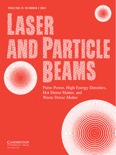
LASER AND PARTICLE BEAMS
Empowering Scientific Progress in Laser ApplicationsLASER AND PARTICLE BEAMS is a distinguished peer-reviewed journal published by Hindawi Ltd, specifically focusing on the fields of atomic and molecular physics, optics, condensed matter physics, and electrical and electronic engineering. With its commitment to advancing knowledge in these areas, the journal has transitioned to an Open Access model since 2021, ensuring that research findings are readily accessible to the global scientific community. Covering an extensive publication history from 1983 to 2023, it serves as an important platform for researchers, professionals, and students interested in the latest developments and applications of laser technologies and particle beam methodologies. Although currently categorized in Q4 for two of its areas and Q3 for electrical engineering in the 2023 base metrics, LASER AND PARTICLE BEAMS is positioned to foster innovative research and discussions within the laboratory and applied settings, contributing significantly to advancements in its respective disciplines. The journal encourages contributions that push the boundaries of knowledge and seeks to attract a diverse array of submissions to enhance its impact in the scientific community.
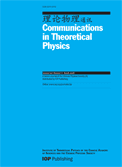
COMMUNICATIONS IN THEORETICAL PHYSICS
Connecting scholars through groundbreaking physics research.COMMUNICATIONS IN THEORETICAL PHYSICS is a distinguished journal published by IOP Publishing Ltd, focusing on the broad and evolving field of theoretical physics. With an ISSN of 0253-6102 and an E-ISSN of 1572-9494, this journal provides a platform for the dissemination of innovative research that contributes to the understanding of complex physical concepts. Situated in the United Kingdom, it has established itself as a pivotal resource from 1996 to 2024, achieving a commendable Q2 ranking in the category of Physics and Astronomy (miscellaneous) for 2023. With a Scopus ranking of #18 out of 81 in its category, demonstrating a 78th percentile, this journal plays a crucial role in enhancing scholarly communication among researchers, professionals, and students alike. Although it does not currently offer Open Access options, the journal's comprehensive scope and commitment to high-quality peer-reviewed research underline its significance in the scientific community, making it an essential reading for anyone engaged in theoretical physics.

PHYSICS OF PARTICLES AND NUCLEI
Fostering Dialogue in Nuclear SciencePhysics of Particles and Nuclei is an esteemed journal within the field of nuclear and high energy physics, published by Pleiades Publishing Inc. Based in the United States, this journal has been a vital platform for disseminating cutting-edge research since its inception in 1996, with coverage extending until 2024. Indexed under the ISSN 1063-7796 and the E-ISSN 1531-8559, it has established itself as a noteworthy publication, currently categorized in the Q3 quartile according to the 2023 standards for Nuclear and High Energy Physics. With its Scopus ranking placing it at #62 out of 87 in its category, Physics of Particles and Nuclei provides unique insights and discussions that resonate with academics, researchers, and students alike. Although it does not offer open access, the journal continues to serve as a crucial resource for those looking to engage deeply with the latest advancements and theoretical explorations in particle and nuclear physics.

EUROPEAN PHYSICAL JOURNAL C
Unlocking Innovative Discoveries in Particle PhysicsEUROPEAN PHYSICAL JOURNAL C (EPJ C), published by SPRINGER, stands as a premier platform for innovative research in the domains of Physics and Engineering. With its Open Access policy established in 2014, EPJ C ensures that groundbreaking findings are readily available to the global scientific community, enhancing accessibility and collaboration. The journal, indexed in prestigious databases, boasts an impressive impact factor and ranks within the Q1 category for both Engineering and Physics and Astronomy, placing it among the top-tier journals in these fields. Celebrated for its rigorous peer-review process, EPJ C offers a wide-ranging scope encompassing various topics in particle physics, quantum field theory, and related interdisciplinary studies. Its consistent publication since 1991 has fostered a vibrant community of researchers dedicated to advancing knowledge and innovation in physics and engineering. Join the scholarly discussion and contribute to the cutting-edge research made possible through EPJ C's esteemed platform.

Annual Review of Nuclear and Particle Science
Pioneering Insights in High-Energy PhysicsAnnual Review of Nuclear and Particle Science is a prestigious journal published by Annual Reviews, focused on the fields of nuclear and high-energy physics. With an impressive impact factor that reflects its authority and influence—ranked Q1 in its category and holding a commendable Scopus rank of #2 out of 87, placing it in the 98th percentile—the journal serves as an essential resource for researchers, professionals, and advanced students alike. Covering pivotal developments and comprehensive reviews in nuclear and particle physics since its inception in 1978, this journal offers unparalleled insights into cutting-edge research and theoretical advancements. While it is not open access, the value of its scholarly content is evidenced by its rigorous peer-review process and its role in shaping contemporary discourse within the scientific community. With contributions from leading experts and a commitment to disseminating foundational and emerging theories, the Annual Review of Nuclear and Particle Science is indispensable for those seeking a deep understanding of the complexities in these dynamic fields.